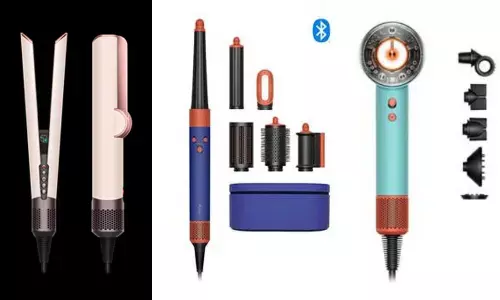NASA's big, new moon rocket begins rollout en route to launch pad tests

NASA's big, new moon rocket begins rollout en route to launch pad tests
Eight or nine days after those tests are completed and the propellant is drained from the rocket, the ship will be rolled back to the assembly building to await the setting of a launch date. NASA announced in November that it would aim to achieve its first human lunar landing of Artemis as early as 2025, preceded by an a crewed Artemis flight around the moon and back in 2024.
NASA's next-generation moon rocket began a highly anticipated, slow-motion journey out of its assembly plant en route to the launch pad in Florida for a final round of tests in the coming weeks that will determine how soon the spacecraft can fly. Rollout of the 32-story-tall Space Launch System (SLS) rocket and its Orion crew capsule marks a key milestone in U.S. plans for renewed lunar exploration after years of setbacks, and the public's first glimpse of a space vehicle more than a decade in development.
The process of moving the 5.75-million-ton SLS-Orion spacecraft out of its Kennedy Space Center Vehicle Assembly Building began shortly after 5:30 p.m. EDT (2130 GMT) under clear skies at Cape Canaveral. A nearly full moon rose about 90 minutes later. The SLS-Orion, which cost some $37 billion to develop including ground systems, constitutes the backbone of the NASA's Artemis program, aimed at returning astronauts to the moon and establishing a long-term lunar colony as a precursor to eventual human exploration of Mars.
The megarocket - standing taller than the Statue of Liberty - was being slowly trundled to Launch Pad 39B atop an enormous tractor-transporter roughly the size of a baseball diamond, crawling at less than a mile per hour on a 4-mile (6.5-km) journey expected to take about 11 hours. The spectacle was carried live on NASA Television and the space agency's website. A band from the University of Central Florida played the National Anthem as the rollout began in front of throngs of employees and other onlookers gathered outside to watch the event.
"Ladies and gentlemen, the world's most powerful rocket, right here," NASA chief Bill Nelson told the crowd, gesturing toward the spacecraft minutes after the rollout started. "Humanity will soon embark on a new era of exploration." Among those in the crowd was former astronaut Tom Stafford, who orbited the moon as commander of Apollo 10 in 1969, NASA said in its webcast.
The rollout, paving the way for NASA's uncrewed Artemis I mission around the moon and back, was delayed last month by a series of technical hurdles the space agency said it has since resolved as teams readied the rocket for the launch pad. DRESS REHEARSAL FOR LAUNCH
Once secured at the pad, the SLS-Orion ship is to be prepared for a critical pre-flight test called a "wet dress rehearsal," which will begin on April 3 and take about two days to complete. Engineers plan to fully load the SLS core fuel tanks with super-cooled liquid hydrogen and liquid oxygen propellant and conduct a simulated launch countdown - stopping seconds before the rocket's four R-25 engines would ignite - in a top-to-bottom evaluation of the entire system.
The outcome will determine when NASA will attempt its first launch of the rocket and capsule combination, a mission designated Artemis I. The U.S. Apollo program sent six manned missions to the moon from 1969 to 1972, the only crewed spaceflights yet to reach the lunar surface. Artemis, named for the twin sister of Apollo in Greek mythology, seeks to land the first woman and the first person of color on the moon, among others.
But NASA has several steps to take before it gets there, starting with a successful Artemis I flight, planned as an uncrewed journey 40,000 miles (64,374 km) beyond the moon and back. The Orion capsule will carry a simulated crew of three - a male mannequin named "Commander Moonikin Campos," in honor of the late NASA engineer Arturo Campos, who played a key role in bringing Apollo 13 back to Earth after an in-flight accident, and two female mannequins. All will be fitted with sensors to measure radiation levels.
NASA has said it was reviewing potential Artemis I launch windows in April and May, but the timeline could slip depending on results of the dress rehearsal. Eight or nine days after those tests are completed and the propellant is drained from the rocket, the ship will be rolled back to the assembly building to await the setting of a launch date.
NASA announced in November that it would aim to achieve its first human lunar landing of Artemis as early as 2025, preceded by an a crewed Artemis flight around the moon and back in 2024. Both of those missions, and others to follow, will be flown to space by the SLS, which surpasses the Apollo-era Saturn V as the world's largest, most powerful launch vehicle, and the first exploration-class rocket built by NASA for human spaceflight since Saturn V.
Nelson also called Artemis an "economic engine" that in 2019 alone generated $14 billion in commerce and supported 70,000 U.S. jobs.



















